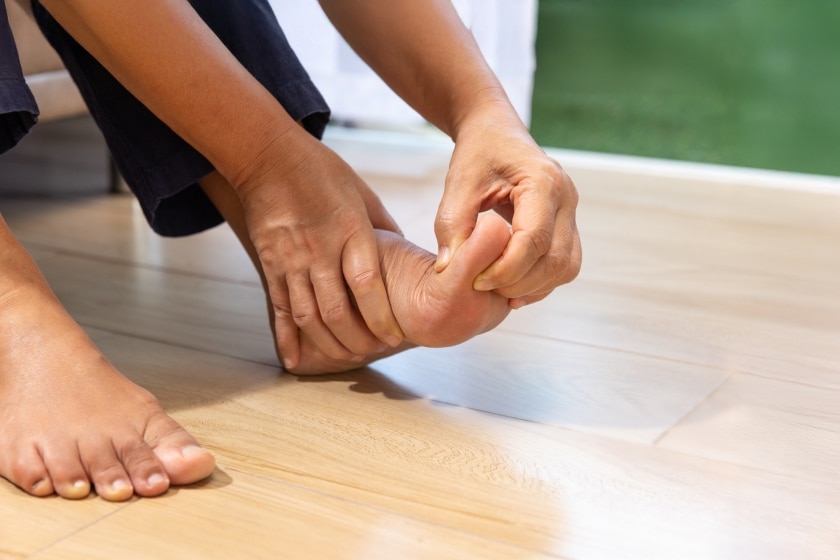Foot and ankle pain is one of the most common issues people face, yet it’s often underestimated. Our feet carry us everywhere, absorbing shock, supporting our weight, and adapting to all kinds of surfaces. When something goes wrong, the impact can be immediate—limiting mobility, reducing independence, and even affecting the rest of the body.
This blog takes a deep dive into foot and ankle pain: what causes it, how it affects daily life, what treatments exist, and practical steps you can take to prevent it.
Why Foot and Ankle Pain Matters
The foot and ankle are remarkable structures. Together, they contain:
- 26 bones
- 33 joints
- Over 100 muscles, ligaments, and tendons
Every step involves a coordinated effort of these parts. In fact, by age 50, the average person has walked 75,000 miles—a huge workload for such small structures.
When pain develops, it doesn’t just affect the foot and ankle. Compensations often ripple up through the knees, hips, and lower back, leading to broader discomfort. That’s why addressing foot and ankle pain early is so important.
Common Causes of Foot and Ankle Pain
Foot and ankle pain can arise from a wide variety of conditions. Here are some of the most frequent:
1. Plantar Fasciitis
- Inflammation of the thick band of tissue (plantar fascia) running across the bottom of the foot.
- Causes stabbing heel pain, especially first thing in the morning.
2. Achilles Tendinopathy
- Irritation of the Achilles tendon, which connects the calf muscles to the heel.
- Common in athletes, runners, and those who suddenly increase activity.
3. Ankle Sprains
- Stretching or tearing of the ligaments around the ankle, often due to rolling the foot outward.
- One of the most common sports injuries.
4. Arthritis
- Degeneration of cartilage in the joints, leading to stiffness and pain.
- Osteoarthritis is common in the ankle and midfoot joints.
5. Neuropathy
- Nerve damage that can cause tingling, numbness, burning, or weakness in the feet.
- Common in people with diabetes but can also occur from other causes.
6. Stress Fractures
- Tiny cracks in the bones caused by repetitive impact or overuse.
- Often seen in athletes and military recruits.
7. Flat Feet or High Arches
- Foot shape can influence mechanics, placing extra stress on tissues and joints.
8. Bunions and Toe Problems
- Structural issues of the toes (bunions, hammertoes, corns) can create pressure and pain when walking.
How Pain Affects Daily Life
Foot and ankle pain is more than an inconvenience—it can disrupt nearly every aspect of life.
- Mobility: Walking becomes uncomfortable, leading people to avoid activity.
- Exercise: Running, hiking, or sports may become impossible.
- Work: Jobs that involve standing or walking can feel unbearable.
- Independence: Severe pain can make daily tasks like grocery shopping or climbing stairs challenging.
- Posture and Balance: Pain often leads to limping, which throws off body mechanics and creates further strain.
Over time, these limitations can reduce overall health, fitness, and quality of life.
Treatment Options for Foot and Ankle Pain
Treatment depends on the cause, but many strategies focus on reducing pain, improving mobility, and restoring function.
1. Rest and Activity Modification
Giving the affected area time to heal is often the first step. Reducing high-impact activities and switching to low-impact options like cycling or swimming can help.
2. Ice and Heat
- Ice reduces inflammation and swelling in acute injuries.
- Heat relaxes muscles and improves circulation for chronic stiffness.
3. Supportive Footwear
Shoes with good cushioning, arch support, and shock absorption reduce strain on the foot and ankle. Orthotics may provide additional support.
4. Strengthening Exercises
Building strength in the calves, foot muscles, and hips provides better support and stability. Examples:
- Calf raises
- Toe curls
- Resistance band ankle exercises
5. Stretching
Gentle stretches reduce tightness in the plantar fascia, Achilles tendon, and calf muscles.
6. Balance Training
Practicing single-leg stands or using a balance board improves stability, reducing the risk of falls and reinjury.
7. Manual Therapy and Massage
Hands-on techniques can ease tight muscles, improve circulation, and restore mobility in stiff joints.
8. Lifestyle Changes
- Weight management reduces load on the feet.
- Improving diet supports bone and tissue healing.
9. Medical Options
In some cases, doctors may recommend:
- Anti-inflammatory medications
- Corticosteroid injections
- Surgery (as a last resort, e.g., for severe arthritis or tendon tears)
Preventing Foot and Ankle Pain
While not every condition can be avoided, many strategies can reduce your risk:
1. Warm-Up Before Activity
Jumping into exercise without preparation increases injury risk. Dynamic stretches and light cardio prepare muscles and joints.
2. Gradually Increase Activity
Avoid sudden increases in intensity, distance, or frequency. Follow the “10% rule”—increase training by no more than 10% per week.
3. Maintain Flexibility
Stretching the calves, Achilles tendon, and plantar fascia helps maintain mobility.
4. Prioritize Strength
Strong leg and foot muscles provide shock absorption and protect joints.
5. Pay Attention to Footwear
Replace worn-out shoes and ensure proper fit. Supportive shoes are essential for both exercise and everyday life.
6. Address Small Issues Early
Don’t ignore minor aches or stiffness. Early intervention prevents bigger problems down the line.
7. Improve Balance
Balance exercises not only reduce fall risk but also protect the ankle from sprains.
The Role of the Kinetic Chain
One of the most important points about foot and ankle pain is that it rarely exists in isolation. The body is a connected system, often referred to as the “kinetic chain.”
For example:
- Flat feet may cause knee pain.
- Ankle instability may contribute to hip or lower back discomfort.
- Limping due to foot pain can strain the opposite leg.
That’s why comprehensive approaches—strengthening, stretching, balance work, and lifestyle changes—tend to be most effective.
When to Seek Help
While many cases of foot and ankle pain improve with self-care, you should seek professional help if you experience:
- Severe pain or swelling that doesn’t improve within a few days
- Inability to bear weight on the foot or ankle
- Repeated ankle sprains or instability
- Numbness, tingling, or burning sensations
- Changes in the shape of your foot or ankle
- Persistent stiffness that limits mobility
Early guidance from a specialist can prevent long-term complications.
Key Takeaways
- Foot and ankle pain is common, but it should not be ignored.
- Causes range from plantar fasciitis and arthritis to sprains, neuropathy, and structural imbalances.
- Pain doesn’t just affect the foot—it can influence the knees, hips, back, and overall mobility.
- Treatment often involves a mix of rest, activity modification, strengthening, stretching, and supportive footwear.
- Prevention strategies—such as gradual training, good shoes, and balance work—are essential.
- Addressing problems early reduces the risk of long-term damage and helps you stay active and independent.
Final Thoughts
Our feet and ankles carry us through life, step by step, mile by mile. When pain strikes, it’s more than an inconvenience—it’s a barrier to independence, mobility, and quality of life.
The good news is that you don’t have to live with discomfort. By understanding the causes of foot and ankle pain, taking proactive steps to strengthen and protect these vital structures, and seeking help when necessary, you can keep moving confidently for years to come.
Your foundation matters—take care of it, and it will take care of you.
We’re currently offering Free Discovery Visits for new patients to explore their options, ask questions, and experience a trial session of care.
📅 Spots are limited and tend to fill quickly—don’t wait to take back control of your foot and ankle.
Call (609) 845-3585 or visit https://info.southjerseypt.com/discovery-visit to claim your free session.



